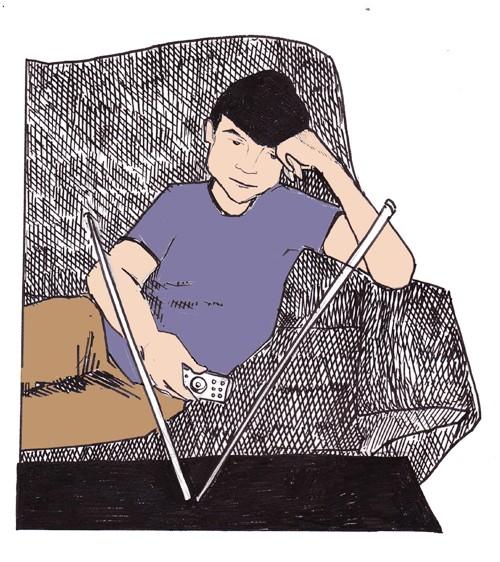Besides the hours you should be using to do something productive, all those violent YouTube videos may be stripping you of something else as well: emotions.
UA associate professor of journalism Shahira Fahmy co-authored and published a study, “”Passing the ‘Breakfast Test’: Exploring the Effects of Varying Degrees of Graphicness of War Photography in the New Media Environment,”” in the journal Visual Communication Quarterly. Results indicated that members of the younger, “”YouTube”” generation are becoming desensitized to graphic images.
“”It’s really not surprising,”” said Melissa Henson, director of communications and public education for the Parents Television Council. “”The human impulse is to become inert to certain things over time. It’s a mind-numbing effect that repeated exposure to violent images can have.””
Motivated by former Wall Street Journal reporter Daniel Pearl’s broadcasted beheading, the roughly one-year study exposed UA journalism students to various graphic AP images. The study aimed to gauge whether or not violent depictions of war influenced a participant’s support of U.S. involvement in the Israeli-Palestinian conflict, which the images depicted.
From a simple photograph of sunshine to a mother screaming after a missile attack, students’ responses were not significantly different.
“”When you get results that are not significant, it’s usually a bad study,”” Fahmy said. “”But in our case, this was a great finding. It shows that whether people see graphic visuals or not, it doesn’t really matter to them.””
Fahmy said a viewer’s ability to successfully gut check gory images does not necessarily mean they lack sympathy. Rather, it suggests that they can think rationally about a tough situation and then move on, she said.
Fahmy said that traditional media’s fears of dealing with a handicapped audience with an inability to stomach hard-core illustrations are unfounded and news organizations should revisit and revise their ethical standard. She said she hopes to see the mainstream news media move toward a more liberal position when deciding whether or not to publish graphic imagery, and that her study supports that position.
Henson has a different interpretation.
“”I would disagree with that premise entirely,”” she said. “”If people are comfortable with A-level violence, then you move onto B-level violence … at what point do you draw the line? At what point do you say it’s too much? Just because people can stomach it doesn’t mean that you should show it.””
Christopher McKinley, an assistant professor of health communication at Montclair State University who co-authored the study, said his goal was to raise awareness to the fact that it is acceptable to show graphic images to viewers, especially younger generation college students.
“”I think they (the younger generation) want to see that information to contextualize these events,”” McKinley said. “”The American news media is such a market-model that they perceive that they need to constantly entertain the viewer as opposed to informing them.””
He added that American news networks’ tendency to heavily censor violence isolates them from many of their international competitors and that their viewership may suffer in the long run because of it.
Ez-Adeen Naji, a Pima Community College student and Baghdad native, said he could still recall images of melted people plastered to shelter walls after being struck by U.S. bombs during the Gulf War. The event, known as the Amiriyah shelter bombing, would be shown on the Iraqi news channels every year to mark the anniversary, he said.
“”The world needs to see what’s going on in Iraq and Palestine because here in the U.S. they don’t show any of it,”” Naji said. “”I understand that it’s not good for kids to see that kind of stuff … but it’s not good for kids to be bombed and forgotten either.””
McKinley and Fahmy both said that they expect to see a drastic shift in the mainstream media’s approach toward publishing more graphic content within the next five to 10 years.
McKinley said that if one news outlet decides to publish graphic images and their actions are well-received by their audience, it may be enough for other news outlets to “”jump on board”” and follow suit.
“”If you really want keep the public interested, we should show the people what they’re looking for,”” Fahmy said. “”They’re looking for reality.””









